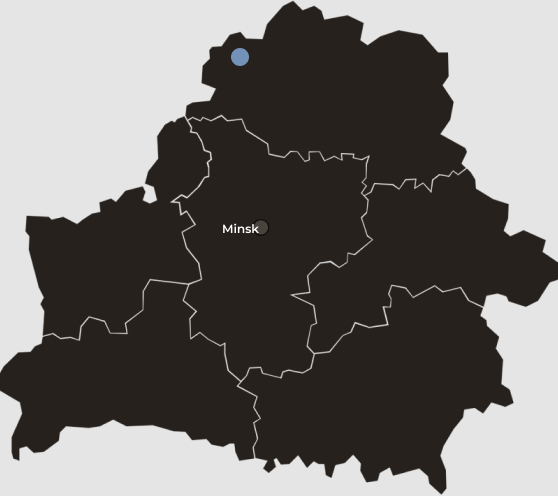Sunny and sultry July. City streets are hot and dusty. No rain has fallen for a month. It’s no wonder that you start yearning for cool winds and fresh clear water. And one morning, you wake up and drive north, to the realm of greenery and endless mirrors of transparent lakes.

Lakeland is the second name for Belarusian north. And it is right here, in Braslau surroundings, that the character of the “blue-eyed country” manifests itself in full.
15 thousand years ago, the melting glacier did a great job here sculpting picturesque hills and kames interchanging with hollows, moving huge boulders and filling cavities with water. Nature blessed this land with incredible beauty of landscapes where endless rows of lakes are stringed on wandering bands of rivers interspersed with emerald-green hills and esker ridges.
I don’t know exactly whether anyone counted the Braslau lakes or their exact number is still uncertain. However, it’s obvious that there are more than 200 of them. Some are large, water-rich and extremely deep, impressing with their vastness and heating one’s imagination with their ancient Baltic names that sound like words from a secret incantation. Others are small and sometimes even nameless. But all of them together belong to the unique landscape that from time immemorial shaped the worldview and mode of living of this corner’s inhabitants.
Having settled here, people had to research the character of this unusual land, conquer it and use its riches to survive. They learnt everything about fishing and hunting: special local fish and game dishes are still popular and often served for guests and tourists. Once, archeologists excavated a former castle site here and found a silver two-pronged fork specially designed for eating fish.
Certainly, those living among waters needed special transport. Long, long ago, they hollowed out or burnt out their boats out of a whole tree and attached special wooden “wings” to make their vessels more stable. Later, they found out another technology that is used even today – making boats out of pine boards aged in the open air for several years. For centuries, Braslau boatmakers have been famous for their mastery. And even today, their skills are in demand: they say, many people here use boats more often than even cars.
The Braslau land left its imprint on the beliefs of the local people. In the pagan times, they iconized numerous stones left here by the glacier. Some of them are impressively huge, and the weight of the biggest ones reaches 40 tones. People brought donations to these stones and prayed to them. Some boulders-idols still have their names: God's Trail, Devil's Trail, Cows’ Stone... After Christianity spread in these lands, new legends and beliefs appeared. Thus, they still tell that some lakes emerged on the sites of former towns, and sometimes, one can see towers in the depth of the water and hear bells ringing there. Braslau is one of few places in Belarus having a crowned wonderworking icon of Virgin Saint Mary. It is known from the 17th century and has a special name, Mistress of Lakes.
The way to Braslau is every time an anticipation of freedom. Standing face to face with the sparkling expanse, closing your eyes and feeling the power of fresh wind flowing over your body, pulling off in a boat you feel your soul tuning to this harmony. Azure and clouds above, transparent depth below, boundless inspiration and faith inside you – vulnerable, brave, all-powerful this moment.
Each of us is a small boat on the shore. Someone pulls anchors easily and courageously. Someone stares at the horizon trying to predict winds’ directions and probable storms. Someone never leaves his familiar, cozy and safe bay. Someone stays attached to the ground with chains thinking sadly about the chances he or she didn’t take. Who you are? The Lakeland will help to find the answer. And, maybe, will even inspire you to try the open water and withstand.
Sincerely yours,
Volha Blazhevich